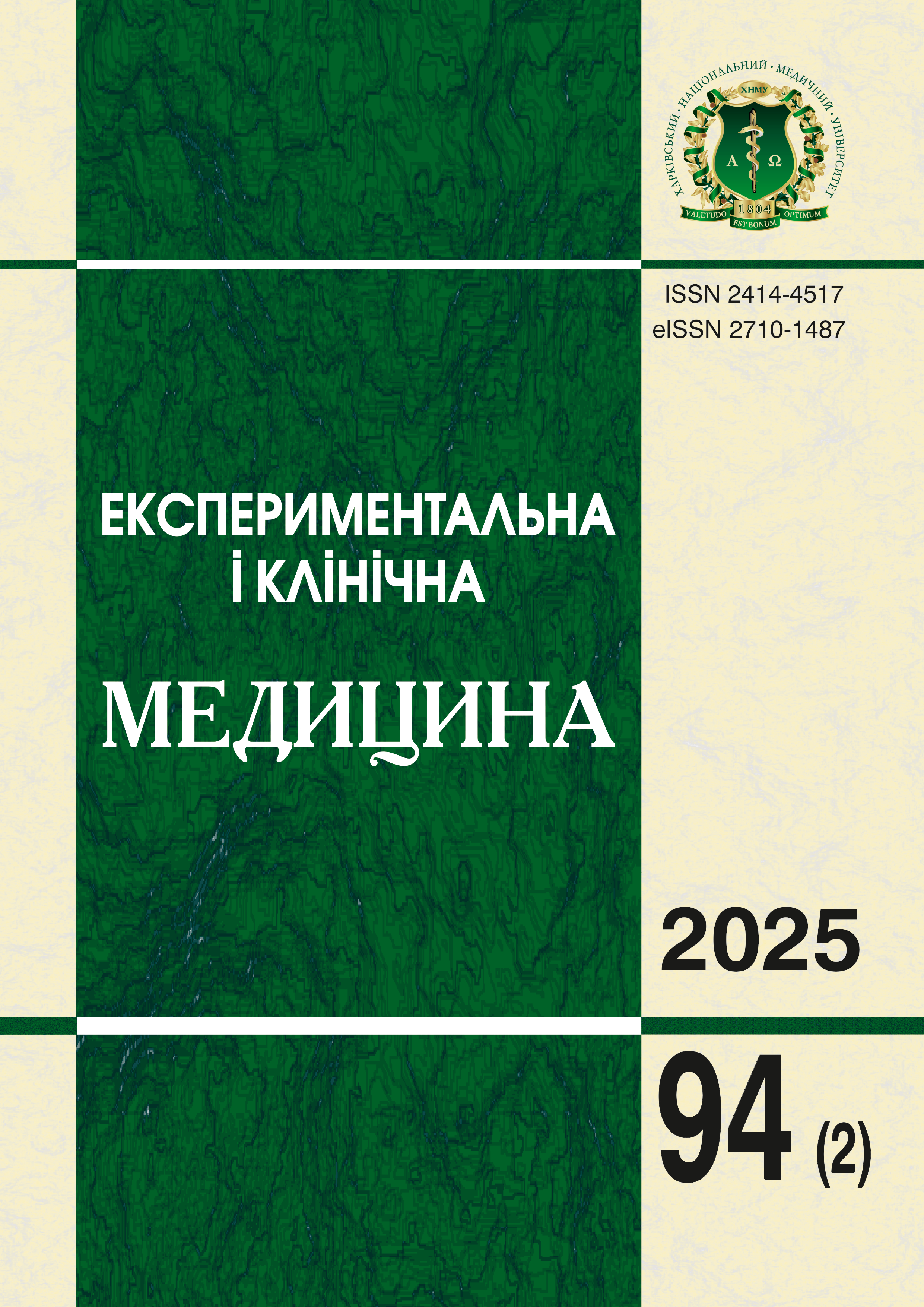Abstract
This article uses various membrane-tropic fluorescent probes to analyze the physicochemical state of phospholipid bilayers in the membranes of peripheral blood leukocytes in healthy individuals and patients with acute ischemic stroke. The severity of the disease is determined by the National (U.S.) Institutes of Health Stroke Scale (NIHSS). For the study, blood leukocyte suspensions were used from individuals in good health and 18 patients with acute ischemic stroke. The control group consisted of 18 healthy individuals. Patients with acute ischemic stroke were divided into three groups based on the severity of their clinical symptoms, as measured by the NIHSS scale. The first group included six patients with mild disease (scoring 1–5 points); the second group included seven patients with moderate disease (scoring 6–16 points); and the third group included six patients with severe disease (scoring 14–20 points). Leukocyte suspensions were prepared from the whole blood of healthy individuals and patients with acute ischemic stroke by lysing the erythrocytes. At the Research Institute of Experimental and Clinical Medicine of the Kharkiv National Medical University, we determined the structural and functional state of the phospholipid bilayer of blood leukocyte cytoplasmic membranes using the following membrane-tropic fluorescent probes O6O, O1O, PH7, and PH1. The results of the study indicate that, depending on the severity of the disease according to the NIHSS scale, changes occur in the structural and functional state of the lipid components of peripheral blood leukocyte cytoplasmic membranes in patients with acute ischemic stroke. In particular, there is a decrease in phospholipid order and an increase in cell structure fluidity. These physicochemical changes may contribute to cell death.
Keywords: NIHSS scale, phospholipid bilayer membranes, leukocytes, fluorescent probes.
References
Ganti L. Management of acute ischemic stroke in the emergency department: optimizing the brain. Int J Emerg Med. 2025;18(1):7. DOI: 10.1186/s12245-024-00780-5. PMID: 39773368.
Lui F, Khan Suheb MZ, Patti L. Ischemic Stroke. [Updated 21 Feb 2025]. In: StatPearls [Internet]. Treasure Island (FL): StatPearls Publishing; 2025. Available at: https://www.ncbi.nlm.nih.gov/books/NBK499997
Shkrobot SI, Budarna OYu, Duve KhV, Tkachuk NI. Stroke in young adults: etiopathogenetic mechanisms (bibliosemantic analysis). A clinical case from personal practice. International Neurological Journal. 2025;21(3):207-17. Available at: https://www.researchgate.net/publication/391926981
Palachai N, Supawat A, Kongsui R, Klimaschewski L, Jittiwat J. Galangin’s Neuroprotective Role: Targeting Oxidative Stress, Inflammation, and Apoptosis in Ischemic Stroke in a Rat Model of Permanent Middle Cerebral Artery Occlusion. International Journal of Molecular Sciences. 2025;26(5):1847. DOI: 10.3390/ijms26051847. PMID: 40076473.
Seah D, Cheng Z, Vendrell M. Fluorescent Probes for Imaging in Humans: Where Are We Now? ACS Nano. 2023;17(20):19478-90. DOI: 10.1021/acsnano.3c03564. PMID: 37787658.
Tkachenko AS, Klochkov VK, Lesovoy VN, Myasoedov VV, Kavok NS, Onishchenko AI, et al. Orally administered gadolinium orthovanadate GdVO4:Eu3+ nanoparticles do not affect the hydrophobic region of cell membranes of leukocytes. Wien Med Wochenschr. 2020;170(7-8):189-95. DOI: 10.1007/s10354-020-00735-4. PMID: 32052227.
Huang W, Han G, Wang D, Zhu Y, Wang H, Liu Z, et al. Lipophilicity Modulation of Fluorescent Probes for In Situ Imaging of Cellular Microvesicle Dynamics. J Am Chem Soc. 2025;147(5):4147-58. DOI: 10.1021/jacs.4c13516. PMID: 39749720.
Klymchenko AS. Fluorescent Probes for Lipid Membranes: From the Cell Surface to Organelles. Acc Chem Res. 2023;56(1):1-12. DOI: 10.1021/acs.accounts.2c00586. PMID: 36533992.
Roffay C, Mercier V. Harnessing fluorescent probes to unveil dynamic membrane mechanics. Nat Rev Mol Cell Biol. 2023;24(12):853. DOI: 10.1038/s41580-023-00646-3. PMID: 37495684.
Disalvo EA. Membrane Hydration: A Hint to a New Model for Biomembranes. Subcell Biochem. 2015;71:1-16. DOI: 10.1007/978-3-319-19060-0_1. PMID: 26438259.
Levental I, Lyman E. Author Correction: Regulation of membrane protein structure and function by their lipid nano-environment. Nat Rev Mol Cell Biol. 2023;24(1):79. DOI: 10.1038/s41580-022-00560-0. Erratum for: Nat Rev Mol Cell Biol. 2023;24(2):107-22. DOI: 10.1038/s41580-022-00524-4. PMID: 36329215.
Tkachenko A, Onishchenko A, Roshal A, Posokhov Y. The study of phospholipid bilayer of cell membranes in leukocytes incubated with high concentrations of the food additive E407a. Journal of clinical medicine of Kazakhstan. 2021;18(2):49-52. Available at: https://surl.li/ellxvx
Tkachenko A, Onishchenko A, Posokhov Ye, Roshal A, Myasoedov V, Nakonechna O. Changes in cell membranes of white blood cells treated with a common food additive E407a. Turkish Journal of Biochemistry. 2021;46(5):557-62. DOI: 10.1515/tjb-2020-0129.
Posokhov YO, Kyrychenko A, Korniyenko Y. Derivatives of 2,5-Diaryl-1,3-Oxazole and 2,5-Diaryl-1,3,4-Oxadiazole as Environment-Sensitive Fluorescent Probes for Studies of Biological Membranes. In: Geddes C, ed. Reviews in Fluorescence. Cham: Springer; 2017. DOI: 10.1007/978-3-030-01569-5_9.
Guzzi R, Bartucci R, Esmann M, Marsh D. Lipid Librations at the Interface with the Na,K-ATPase. Biophys J. 2015;108(12):2825-32. DOI: 10.1016/j.bpj.2015.05.004. PMID: 26083922.
Pivovarenko VG, Klymchenko AS. Fluorescent Probes Based on Charge and Proton Transfer for Probing Biomolecular Environment. Chem Rec. 2024;24(2):e202300321. DOI: 10.1002/tcr.202300321. PMID: 38158338.
Pyrshev KA, Klymchenko AS, Csúcs G, Demchenko AP. Apoptosis and eryptosis: Striking differences on biomembrane level. Biochim Biophys Acta Biomembr. 2018;1860(6):1362-71. DOI: 10.1016/j.bbamem.2018.03.019. PMID: 29573990.
Bock FJ, Riley JS. When cell death goes wrong: inflammatory outcomes of failed apoptosis and mitotic cell death. Cell Death Differ. 2023;30(2):293-303. DOI: 10.1038/s41418-022-01082-0. PMID: 36376381.

This work is licensed under a Creative Commons Attribution-NonCommercial-ShareAlike 4.0 International License.

